Aviation Safety Report: The Impact of Technology Over-Reliance
VerifiedAdded on 2023/01/11
|7
|580
|28
Report
AI Summary
This report delves into the critical issue of technology over-reliance within the aviation industry, examining its implications for safety and security. The report identifies the problem, which is the over-reliance on technology that reduces the role of the pilot. It explores the role of aviation legislation and laws, including the Federal Aviation Act of 1958 and relevant regulations. The report also touches upon aviation security measures and the benefits and outcomes of aviation safety programs. A SWOT analysis is conducted, highlighting the advantages of technology such as cockpit transformation and reduced human error, while also addressing weaknesses such as inappropriate user interfaces and the potential for over-trust. Opportunities like cost reduction and improved efficiency are discussed, along with threats like pilot skill degradation. References to relevant studies are provided to support the analysis. This report is a valuable resource for understanding the complex interplay of technology and safety in aviation.
1 out of 7

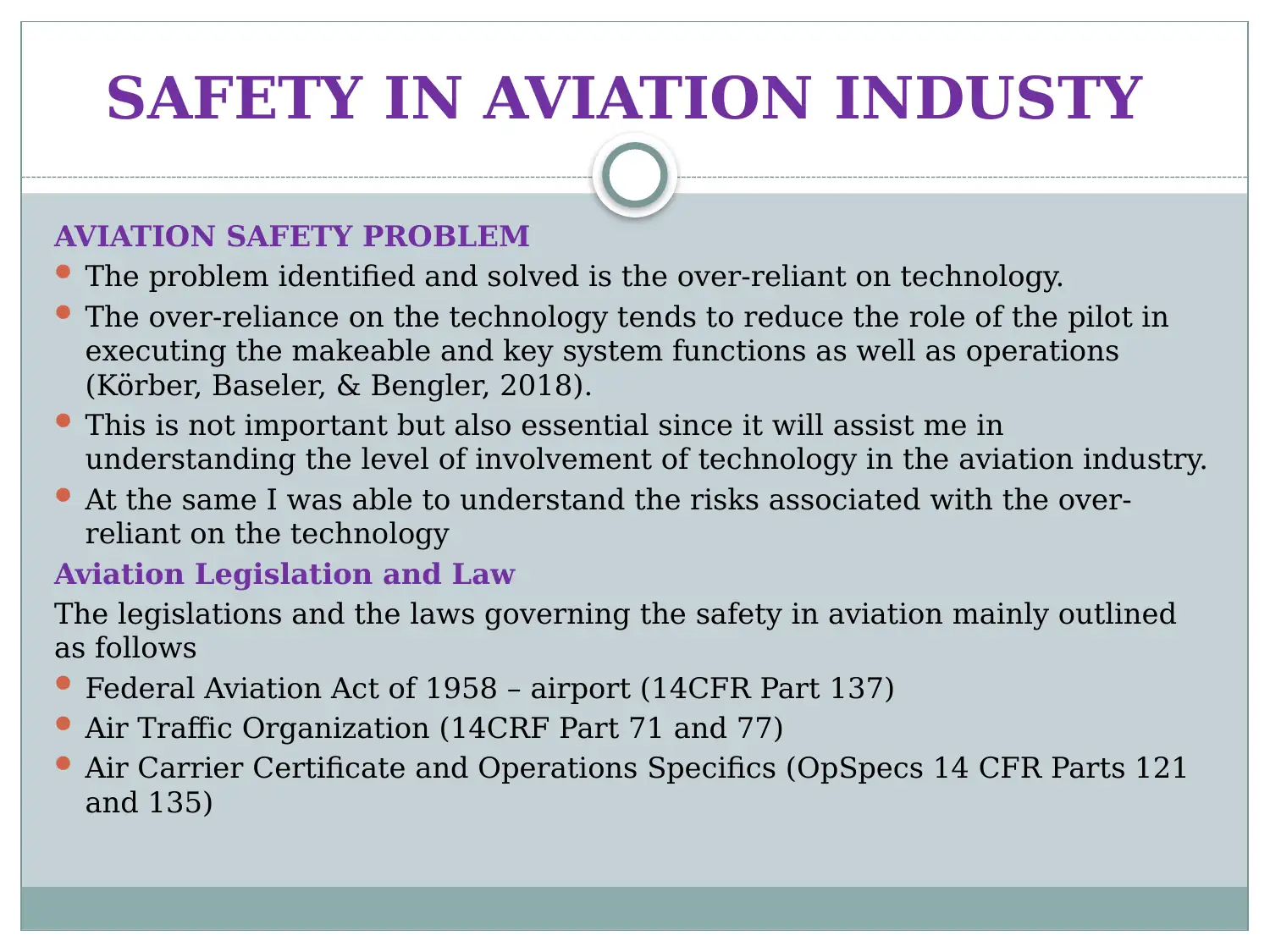
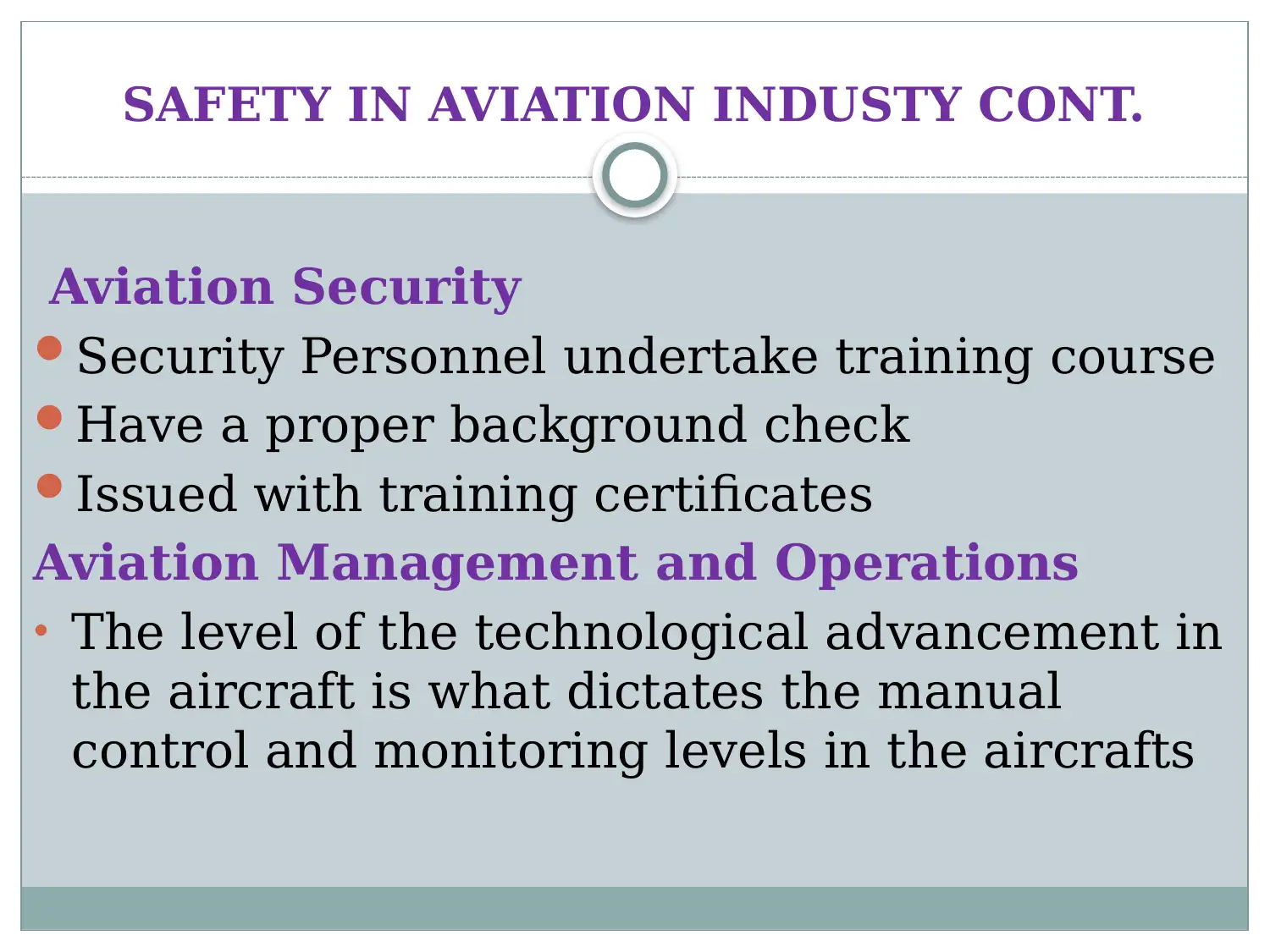

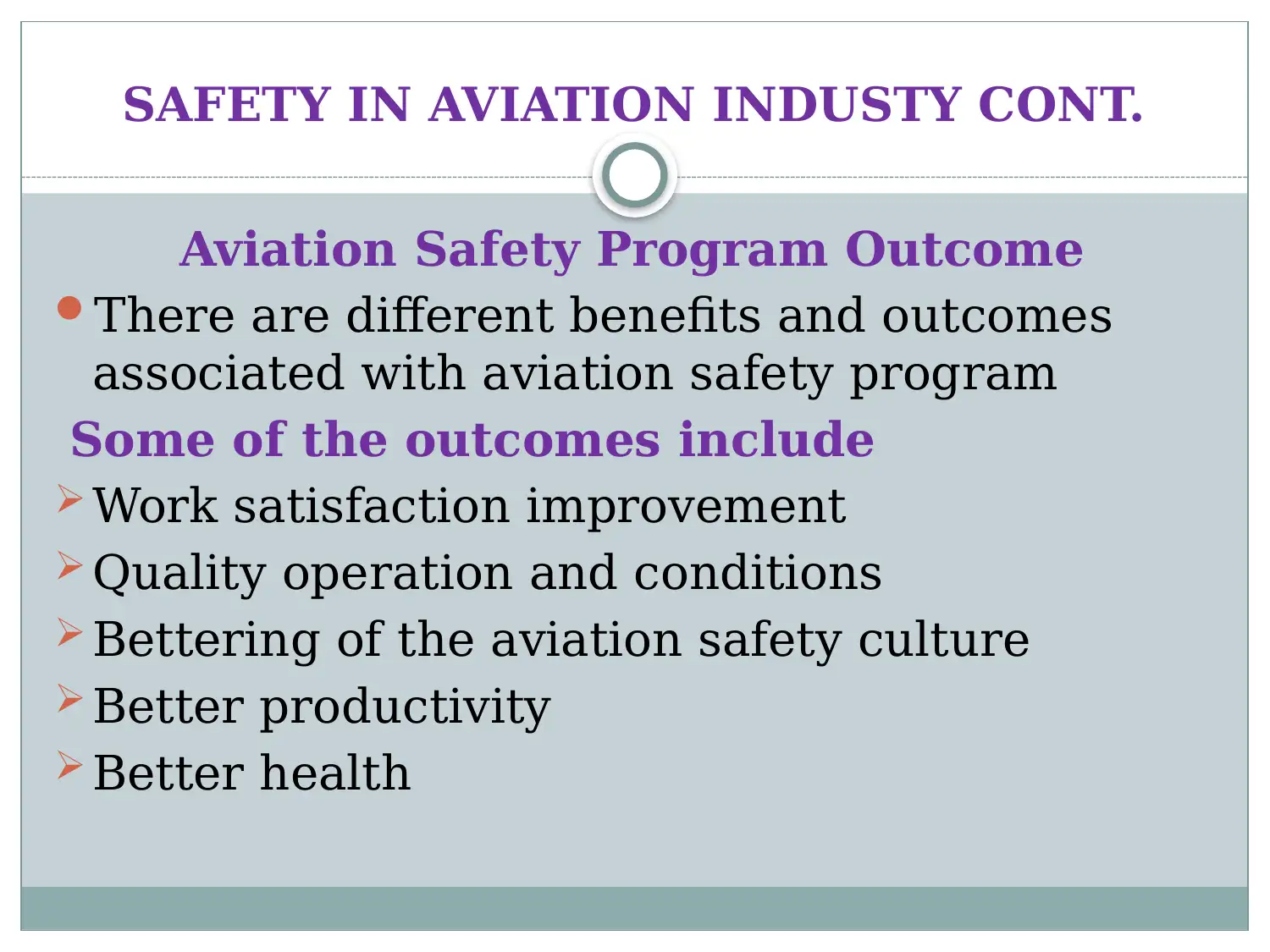
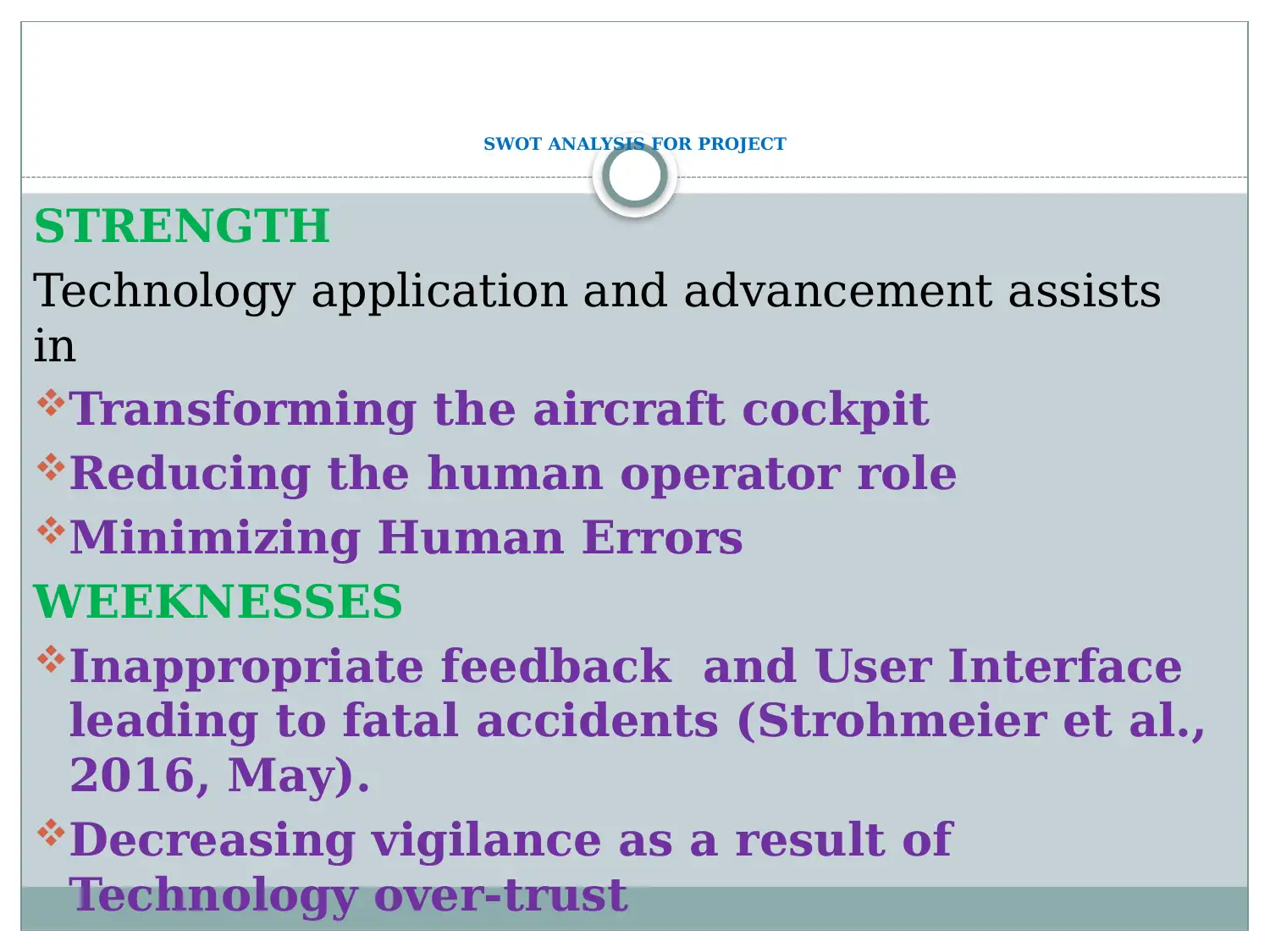
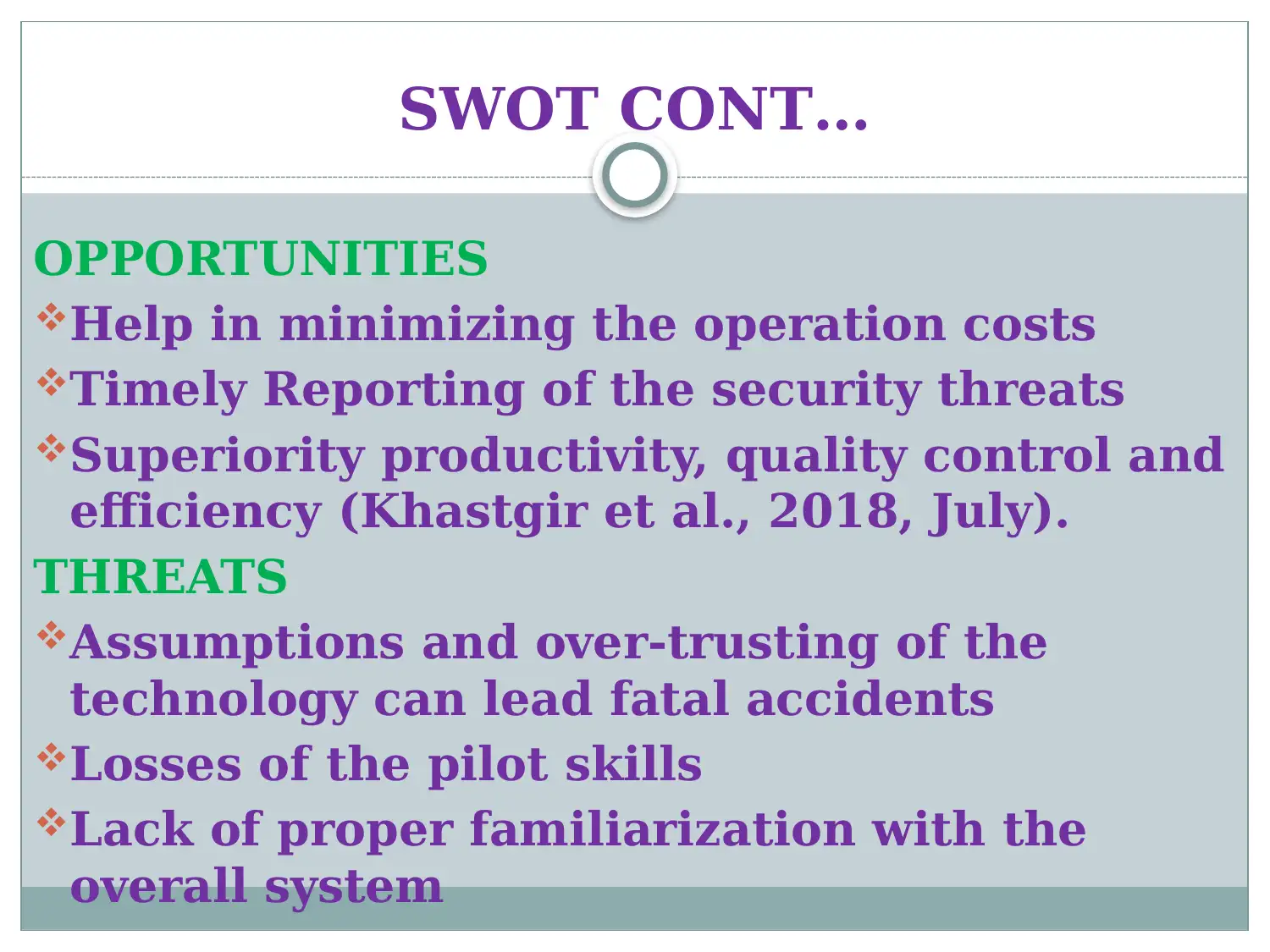

![[object Object]](/_next/static/media/star-bottom.7253800d.svg)